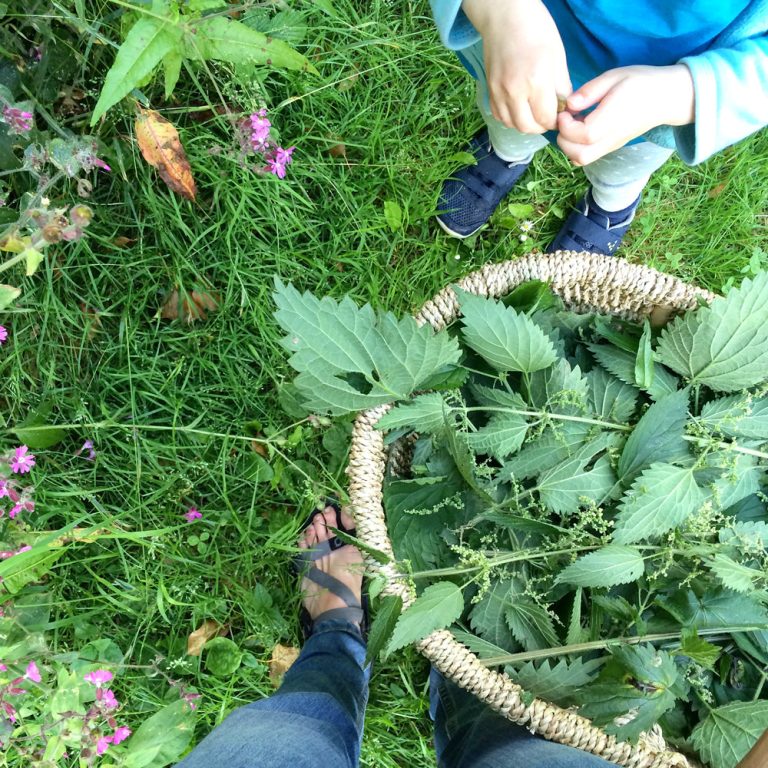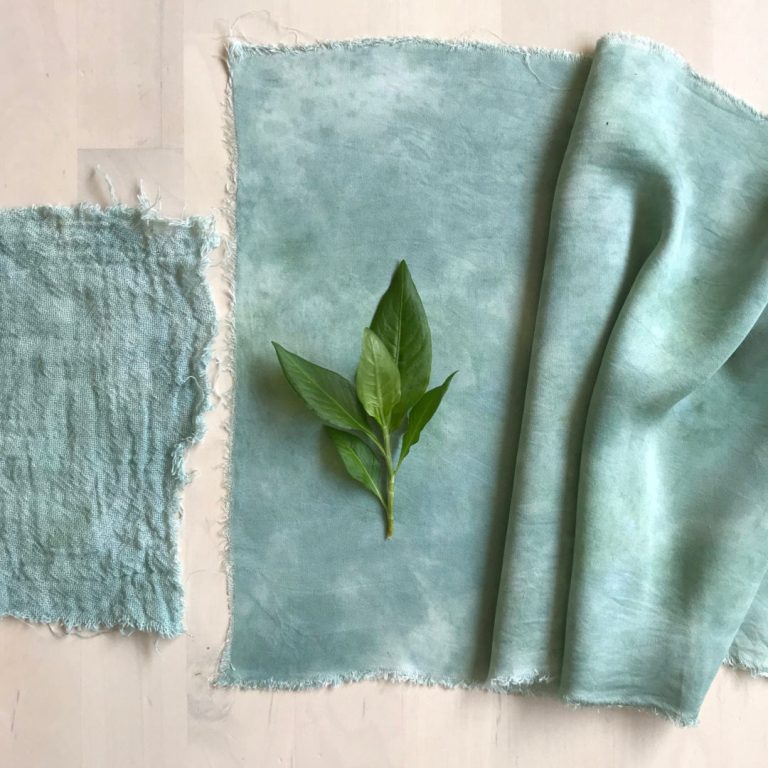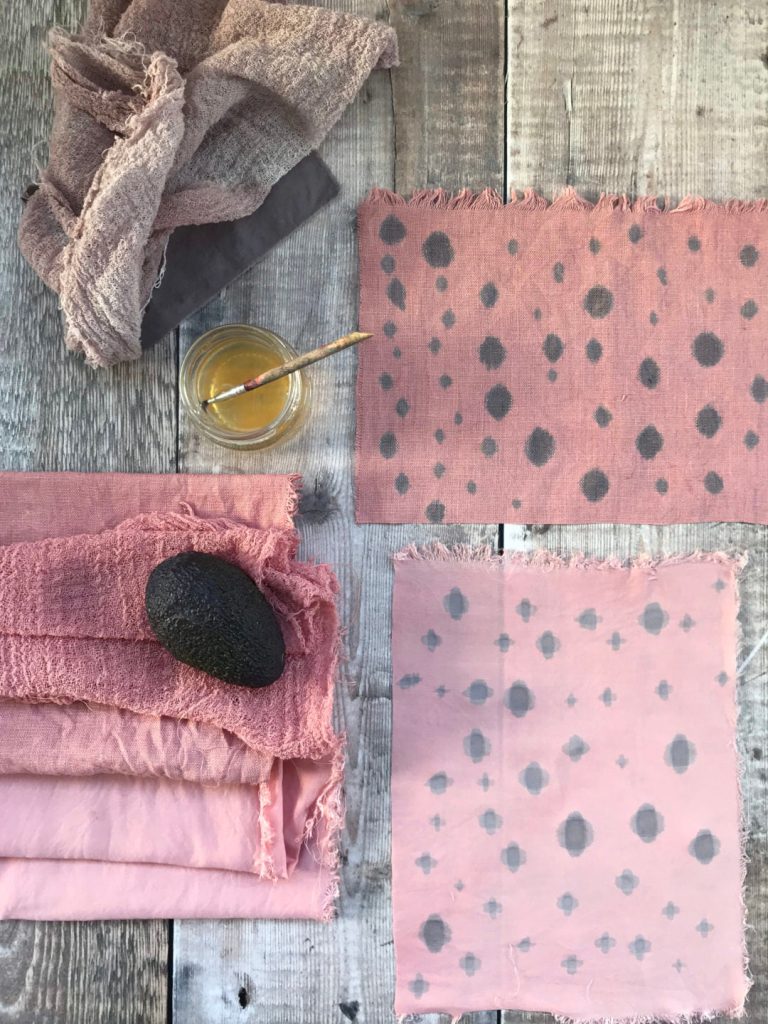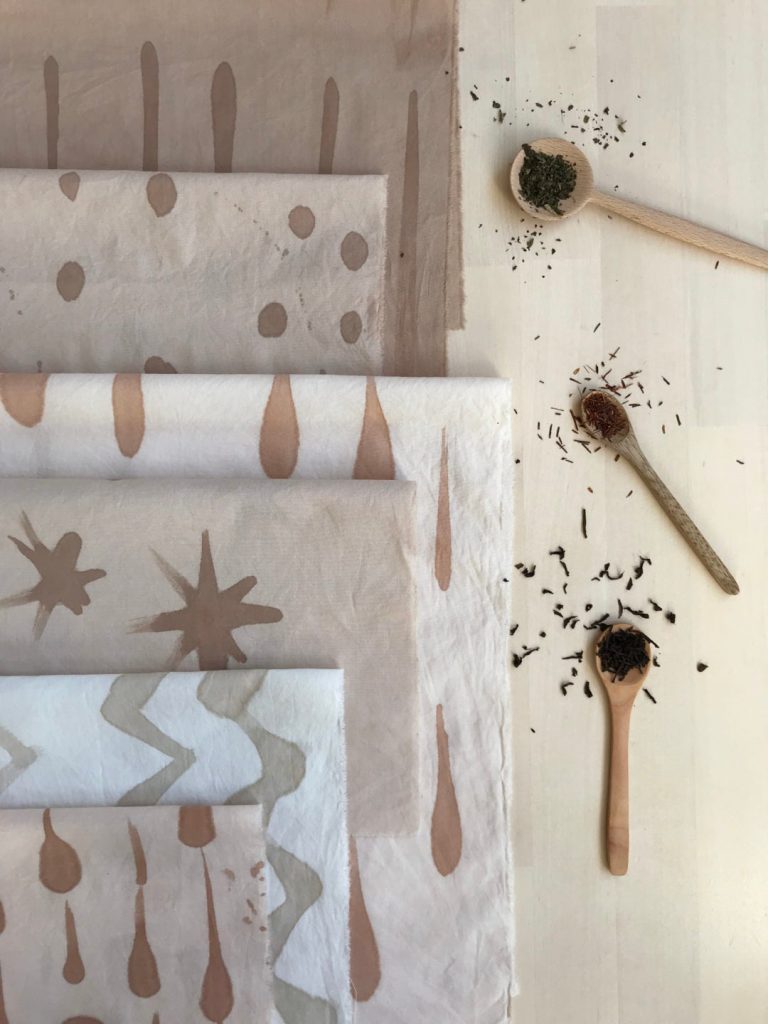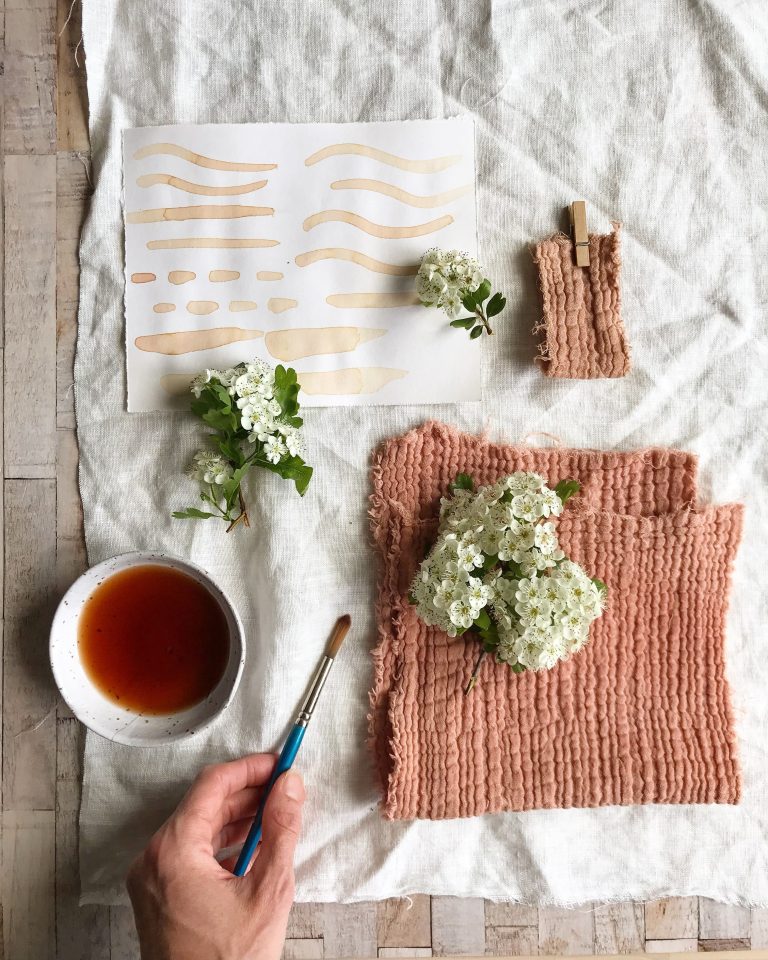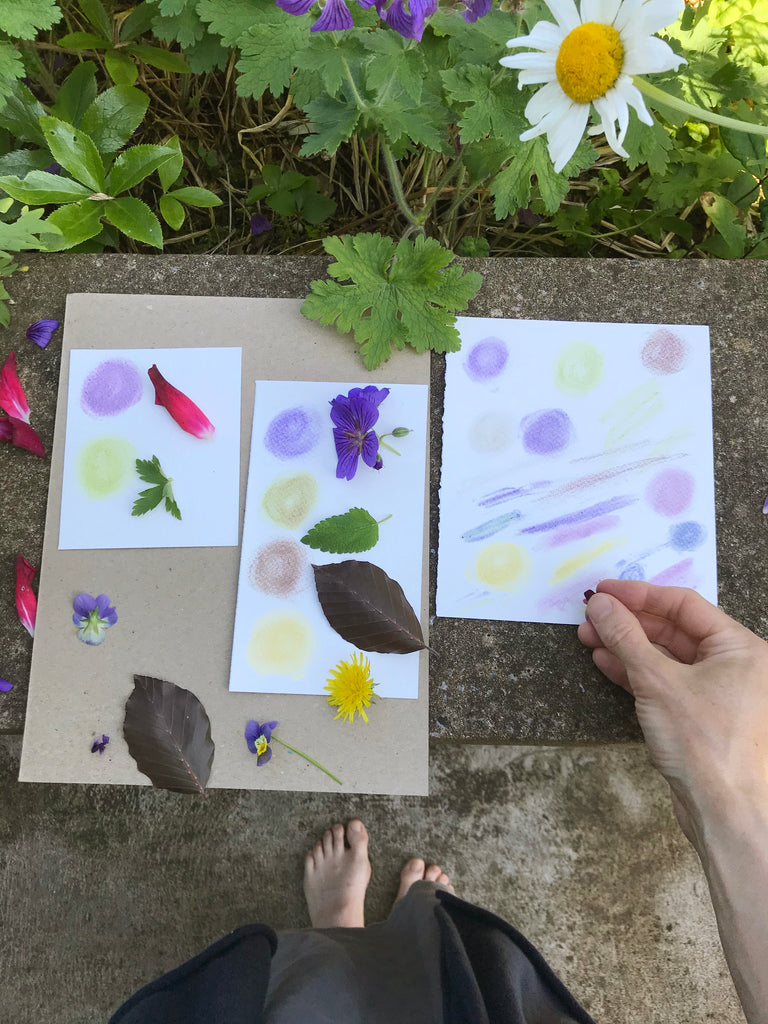
One of the simplest ways to make colour from plants is to scrunch leaves or petals in your fingers and rub directly onto paper. My son was so impressed with this and said that if we ever run out of coloured pencils, we just need to go outside and find some plants!
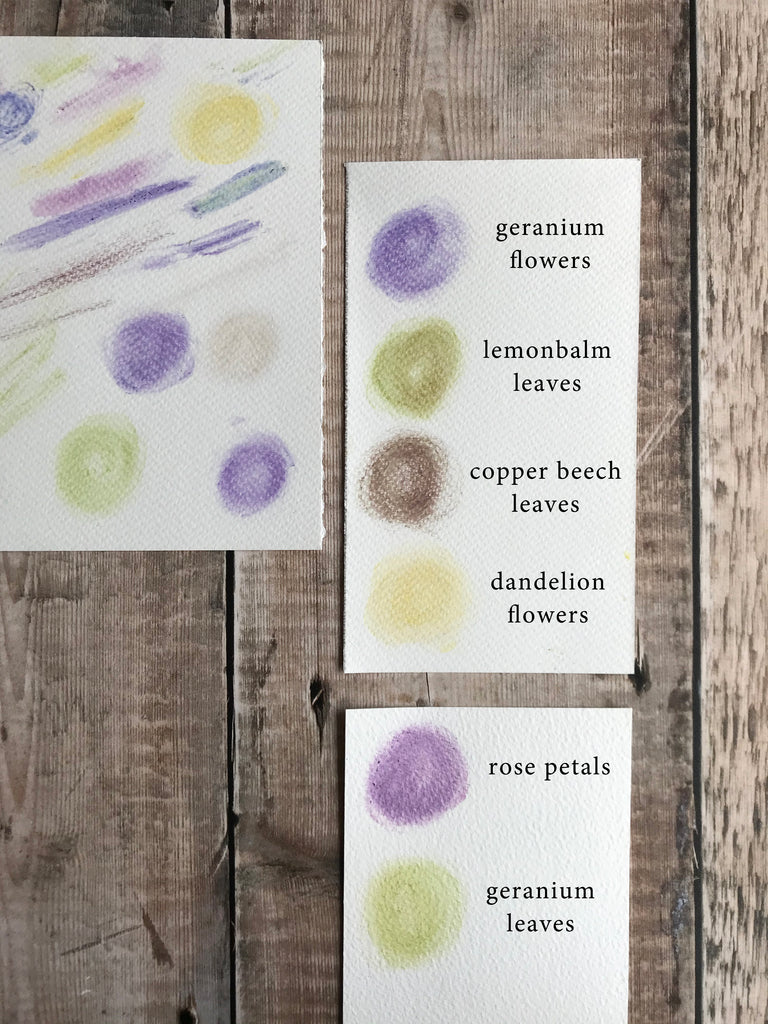
Use highly pigmented plants
Generally, if the colour transfers onto your fingers, then it will give some kind of colour on paper (or fabric – more on that later).
The texture from rubbing plants on paper gives a beautiful pastel quality, and it works especially well on watercolour paper.
Safety note
It’s important to use only non toxic plants, as they will come into contact with your skin. Even with safe plants, you may choose to wear thin gloves to protect your hands.
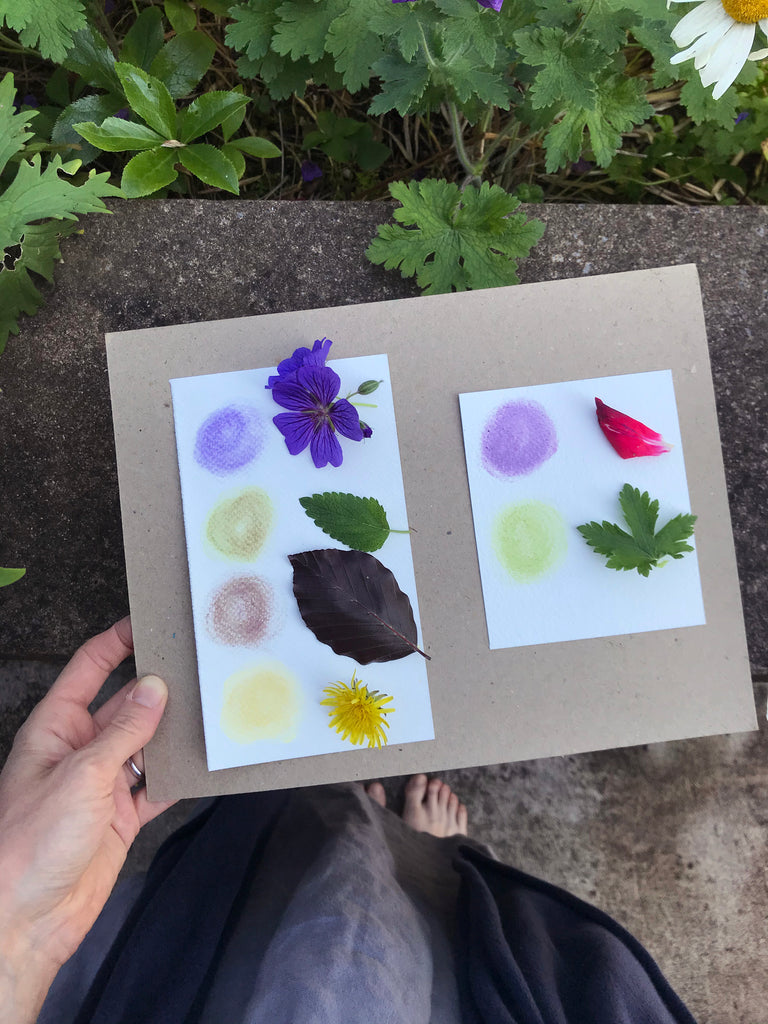
Tips
- Allow the moisture from the plants to dry fully, then brush away any little pieces of petal or leaf without smudging your artwork.
- Give a layer of colour time to dry before applying a new colour, just as you would with watercolour painting.
- Scrunch plants into different sided balls for wider or finer markings.
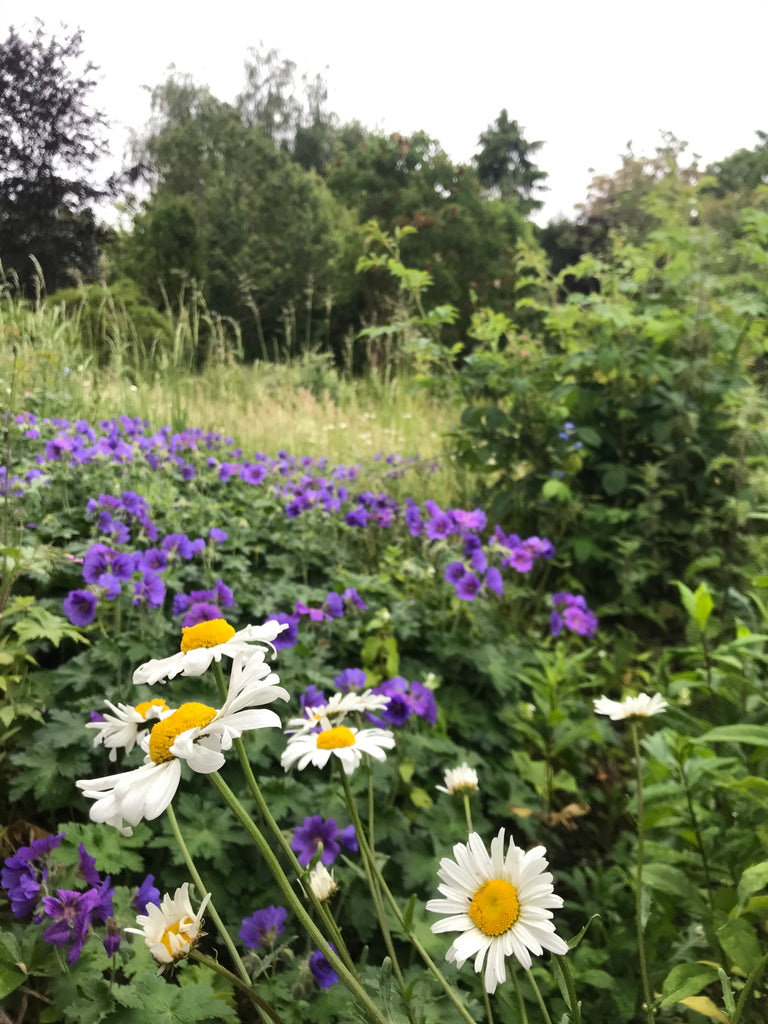

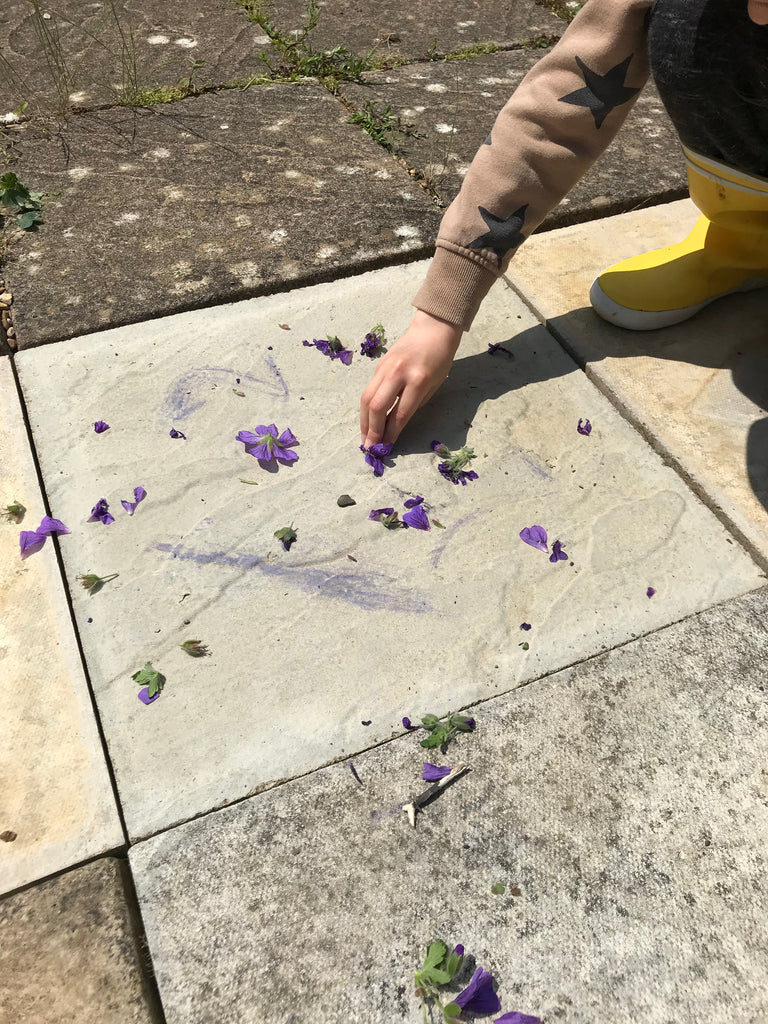
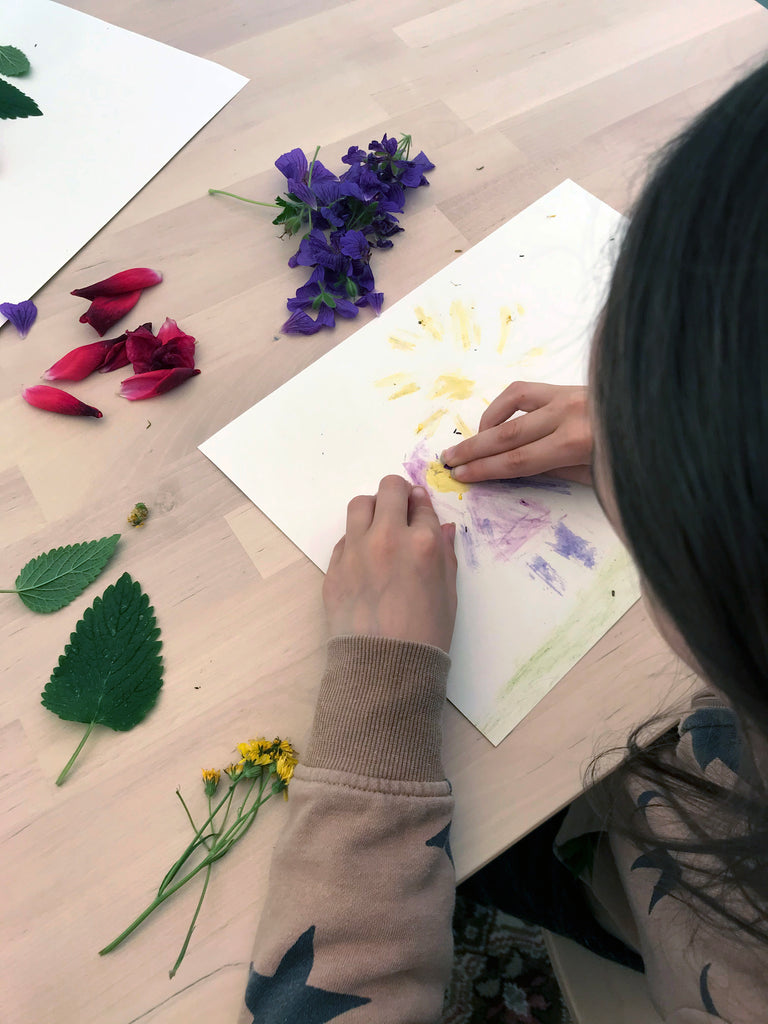
How many colours of the rainbow can you find?
As a fun challenge, see if you can make all the colours of the rainbow from plants. Some colours are surprising when they transfer onto paper, so you’ll have to experiment to see what you get! Interestingly, dark pink poppies made a light beige on paper, so there are no guarantees.
The pH of different surfaces will also yield different colours. I was surprised to discover that copper beech leaves gave TEAL on my patio tiles (!), and a more predictable warm brown shade on paper.
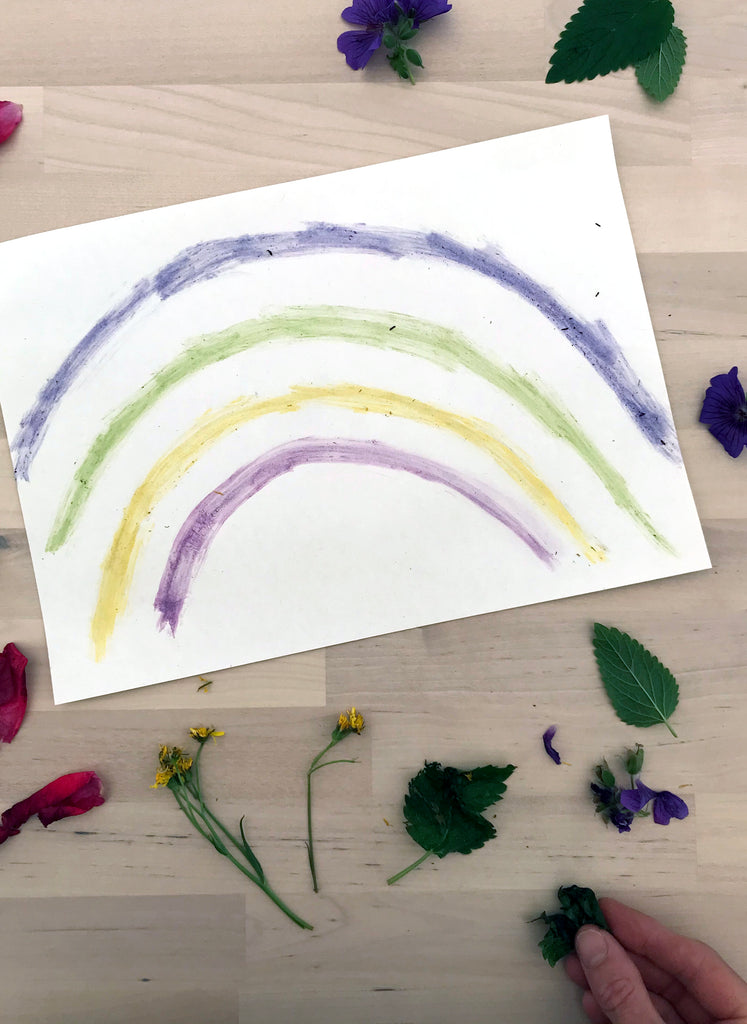
How long will the colours last?
Some of these shades will last longer than others, so before making any special artwork, it’s best to do a lightfastness test.
To test how well colours last in the light:
- Colour a swatch of paper with plants.
- Partially cover the swatch with a piece of thick card.
- Leave in the sunlight for a minimum of two weeks.
- After a period of time, look under the card and check for fading or colour changes.
With these results, you can decide if it’s suitable for the purpose you had in mind. Some shades will shift and mellow, and others may even disappear.
If you’re just colouring with plants for fun like I did, then enjoy making a rainbow of shades and appreciate them whilst they last!
Of course, a lightfastness test will take a few weeks, by which point the plants may be over for the year, so keep that in mind.

Taking things further with fabric
You can, of course, rub flowers and leaves onto fabric.
As you may already know, I like to pretreat fabric with soya (soy) milk; the soy protein acts as a binding agent between the fibres and dyes. This pretreatment method can be found in Botanical Colour at your Fingertips.

